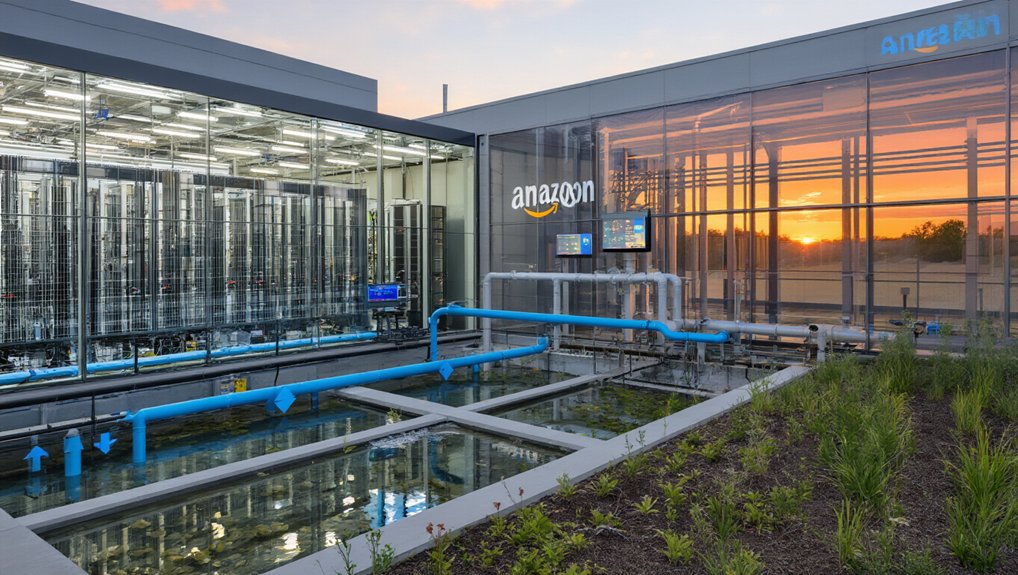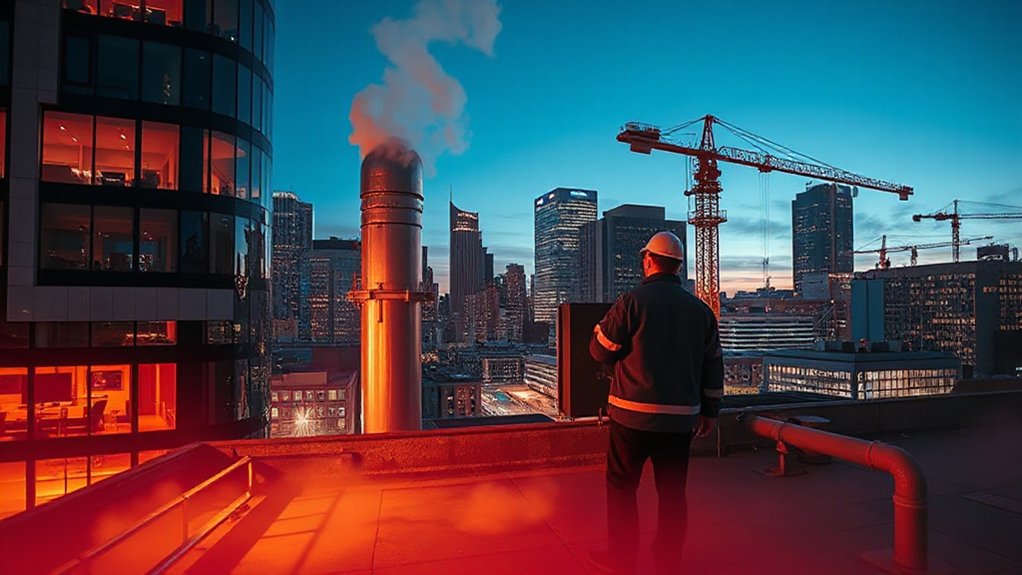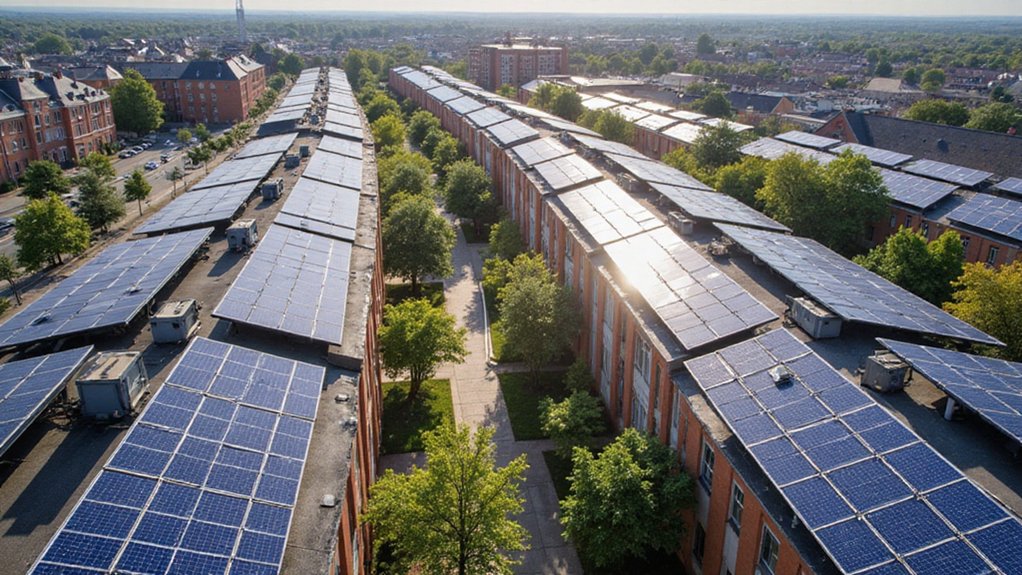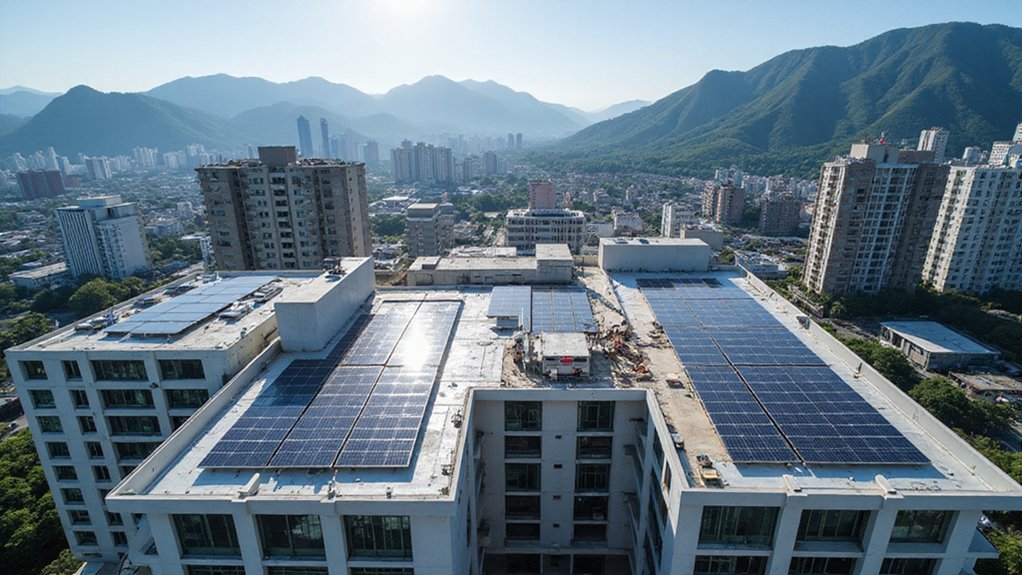Amazon’s turning sewage into cloud computing power, and yeah, it’s exactly what it sounds like. The tech giant’s recycling toilet water to cool data centers across the U.S., with plans to expand to 120 facilities by 2030. They’re stripping out 99% of the nasties through a three-step purification process. It’s actually smart—saves drinking water while dealing with all that AI heat. The treated stuff ends up cleaner than your average swimming pool.
Water scarcity meets Silicon Valley ingenuity. Amazon Web Services is literally turning sewage into cloud computing power, treating municipal wastewater to cool its data centers. Yes, the same stuff you flush ends up cooling the servers powering your Netflix binge.
The tech giant plans to expand recycled wastewater usage across 120 U.S. data centers by 2030. They’ve already improved water efficiency by 40% over three years. Not bad for a company whose servers generate enough heat to fry an egg on the motherboard.
Currently, over 20 facilities already use this treated sewage water, mostly in Virginia and California where drought isn’t just a buzzword—it’s reality. Singapore has also joined the recycled water party, proving this isn’t just an American experiment.
Here’s the kicker: nearly two-thirds of new U.S. data centers sit in water-stressed areas. Meanwhile, Amazon’s dropping $100 billion on more data centers this decade. The math doesn’t add up unless you get creative with your water sources. Enter: toilet water.
The process isn’t as gross as it sounds. AWS puts wastewater through a three-step purification marathon that removes 99% of impurities. The treated water meets strict quality standards before touching those precious servers. It’s cleaner than your average swimming pool, probably.
This approach frees up drinking water for actual drinking—revolutionary concept, right? AWS is now 53% toward its “water positive” goal for 2030, up from 41% last year. They’re aiming to replenish more water than they consume. The company even sends some treated discharge water to farmers. Your Instagram posts might literally be watering someone’s crops.
The strategy makes sense. Traditional cooling gobbles up potable water like there’s no tomorrow. But tomorrow’s looking pretty dry in many regions. The treated wastewater also diverts waste from landfills and waterways, preventing environmental contamination. This approach mirrors the high efficiency of hydroelectric power generation, which converts about 90% of energy input to usable electricity.
AWS balances different cooling methods—air conditioning saves water but burns electricity, while evaporative cooling uses more water but less power. Pick your poison.
This wastewater initiative represents more than corporate greenwashing. It’s a scalable model for industrial water use that other companies should copy. Because let’s face it, the cloud’s getting thirstier, and we can’t keep treating freshwater like it falls from the sky. Oh wait.
References
- https://www.geekwire.com/2025/as-data-center-demand-soars-amazon-expands-use-of-wastewater-to-cool-its-cloud/
- https://sustainability.aboutamazon.com/natural-resources/water
- https://datacentremagazine.com/articles/reclaimed-wastewater-to-be-used-at-20-aws-locations
- https://www.sdxcentral.com/news/aws-turns-sewage-into-sustainable-data-center-cooling/
- https://grist.org/technology/amazon-data-centers-water-positive-energy/









